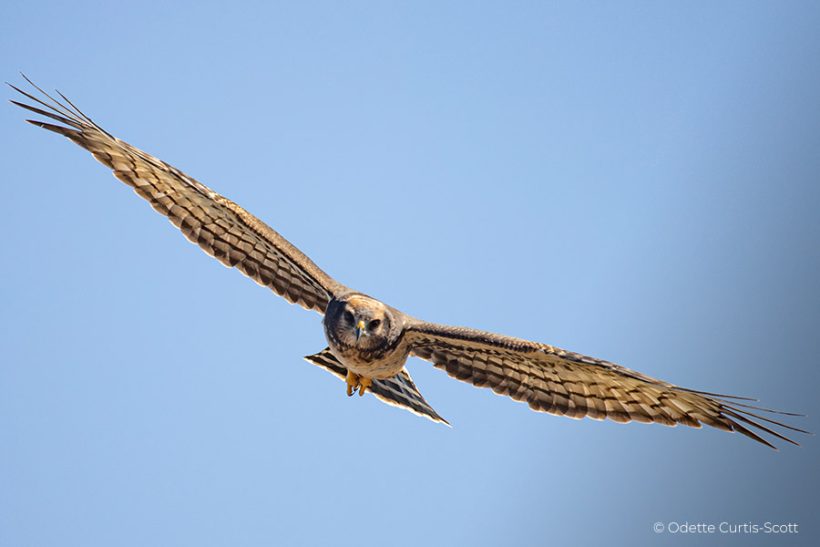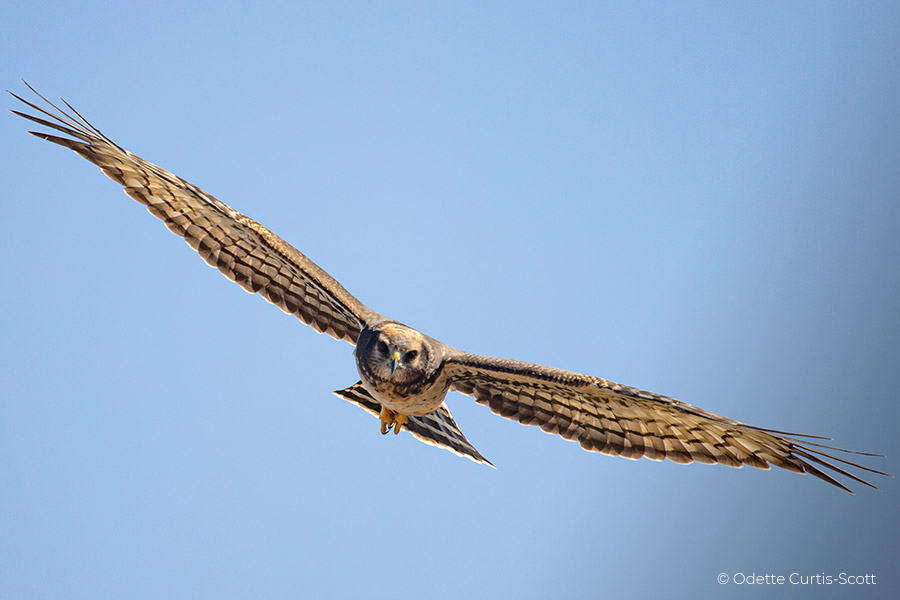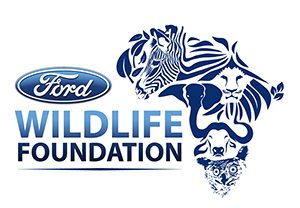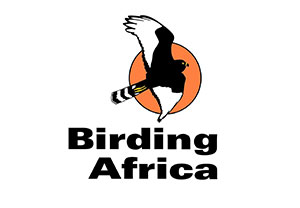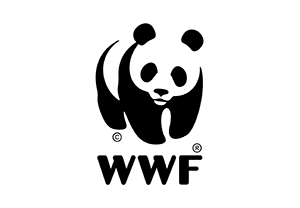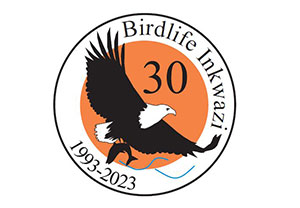A third Black Harrier has been killed by the blades of wind turbines, on a wind farm situated between Bredasdorp and Swellendam. The Overberg Renosterveld Conservation Trust (ORCT) is now calling for additional mitigation measures to be tested at the wind farm, to find ways of protecting this threatened species.
Black Harriers are listed as globally Endangered (International Union for the Conservation of Nature) and only around 1 300 individuals remain today, with models indicating that annual declines are ongoing. Black Harriers are essentially endemic to South Africa, with a few birds popping into Namibia and Lesotho, where they may occasionally breed. However, the species’ breeding epicentre falls within the Fynbos Biome, extending into the Eastern Cape. Within the fynbos, they breed along the coast (in large reserves such as the West Coast National Park), and at relatively high altitudes in montane sites, while several important breeding sites are found in the Overberg’s remaining renosterveld patches, which lie scattered in a matrix of monoculture.
One of the most crucial breeding grounds is a large renosterveld fragment close to the Excelsior Wind Farm, owned and managed by Engie (previously BTE Renewables). In a concerted effort to prevent the deaths of threatened birds which are considered highly collision-prone, this wind farm has been implementing a shutdown-on-demand approach. This means that a team of nine observers are stationed at strategic points on the wind farm on a daily basis, constantly scanning for threatened species flying in the direction of the wind turbines. When they see a high-risk species approaching, they call, via radio to a control room, that the specific turbine(s) is shut down. This takes about 30-40 seconds so the call must be made early.
A success for larger threatened birds
According to Dr Odette Curtis-Scott, CEO of the ORCT, the approach has worked well for a number of threatened priority birds. She says, “This wind farm has been pioneering in adopting this practice to protect threatened species. They are the first wind farm to adopt the observer-led shutdown-on-demand approach in South Africa. And it seems to have worked well for larger threatened species, especially Cape Vultures and large eagles such as the Martial and Verreaux’s Eagle. There has not been a single recorded fatality among these species.”
However, the smaller, darker and often faster-flying Black Harrier has not been so lucky. A Black Harrier with a satellite tag (fitted by the ORCT) was killed late in 2021. The carcass of another Black Harrier that wasn’t tagged was also found below a turbine at the wind farm about a year later. “In this most recent devastating event, Peter, a Black Harrier that had a satellite tag fitted to him only in November 2023, was killed in February this year.”
According to Dr Rob Simmons, Harrier expert and a partner of the ORCT, “While Peter’s carcass wasn’t found, his satellite tag was found below the turbine, with damage indicating high impact. We only became aware that the tag was not moving four days after the collision had taken place, giving scavengers plenty of time to drag the carcass away or dispose of it.”
Scavenger removal is a common problem on wind farms and carcass searchers miss about one in every two carcasses due to removal (or inconspicuous victims). A study by Shaw and colleagues (2015) in the Karoo found that all carcasses are scavenged within a week, and six of the 15 had been displaced 20m or more.
Thus the number of dead Black Harriers could be double those found (i.e. at least six in this case since the wind farm came on line in 2020). Simmons says, “The real number is likely to be double the number of recorded fatalities, as unpublished carcass removal studies from a nearby wind farm has shown. For Black Harriers, wind turbines present a significant and relatively new threat. Given the existing pressures already on the population, which includes most importantly habitat loss and climate change, the species cannot afford to be further compromised at all. Population modelling undertaken by the University of Cape Town shows us that they could become extinct in the next 75 to 100 years if just three to five additional individuals are killed annually.”
An opportunity to test blade patterning
Curtis-Scott says there are more mitigation steps that can be taken by wind farms across South Africa. “While this is a loss for the already threatened Black Harrier population, there is an opportunity to use these new data on wind turbine collisions and turn it into a positive. For example, there is growing evidence that blade painting could reduce collisions with turbines, with birds able to pick out the movement of the turbines better when one turbine is painted with a high-contrast colour. While we still need considerable research in this field, this could be an excellent opportunity to test this mitigation method. A recent and exciting ‘win’ for the conservation community was the approval of blade patterning by the Civil Aviation Authority, all due to extensive negotiation and motivation put forward by Dr Simmons and our colleagues at the South African Wind Energy Association (SAWEA) and BirdLife South Africa.”
The Overberg Renosterveld Conservation Trust is undertaking a research and conservation programme for renosterveld-breeding Black Harriers – a flagship species for renosterveld and fynbos conservation. Black Harriers are dependent on intact and healthy renosterveld for breeding purposes. The team, with wonderful support from donors and partners, have GPS-tagged 15 Black Harriers to date. With four tagged birds confirmed to have died (two from wind turbine collisions, one at the hands of a grain cutter and one likely via natural predation), there are still 10 satellite tags that are providing data to the team.
Curtis-Scott says, “We recently joined forces with colleagues Dr Megan Murgatroyd and Prof Arjun Amar, who are also currently tagging Black Harriers, which will mean that our collective sample of tagged harriers will effectively be double what it would have been without this collaboration. The information we are collecting through these GPS tags is phenomenal. We can better understand movements and habits of the birds and can increasingly see the many threats that Black Harriers face. We would never have been able to find out about mortalities and their causes without these tags.
“With this information, conservation organisations across South Africa will be able to implement conservation measures to protect these charismatic birds, and to work to secure a future for a species that otherwise could become extinct in the not-too-distant future. We are pleading with all wind farms that are impacting, or could impact on threatened birds, to consider implementing, or in the very least testing, the various tiers of mitigation, particularly the blade-patterning option.”

